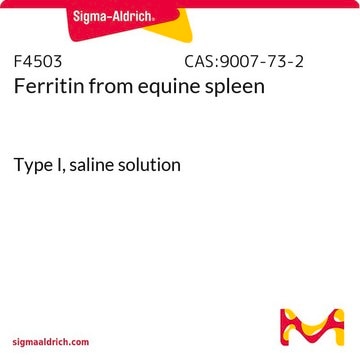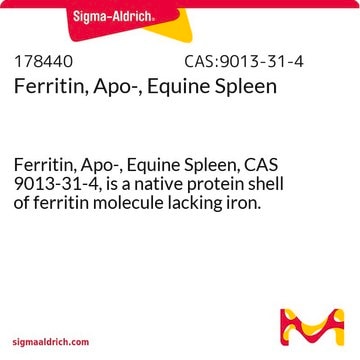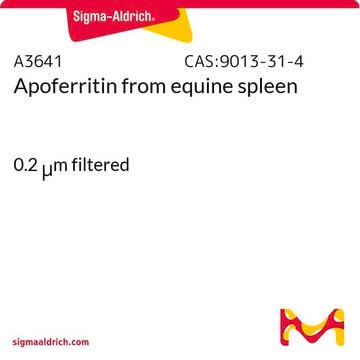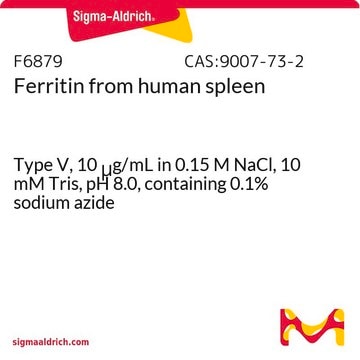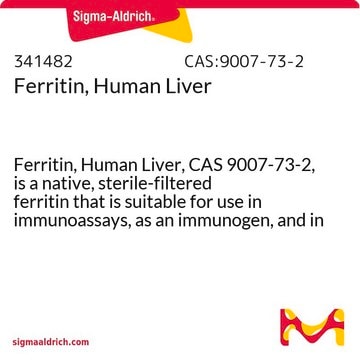F7879
Ferritin, cationized from horse spleen
10 mg/mL in 0.15 M NaCl
Selecione um tamanho
Selecione um tamanho
About This Item
Produtos recomendados
fonte biológica
horse spleen
Nível de qualidade
esterilidade
sterile-filtered
Formulário
liquid
concentração
10 mg/mL in 0.15 M NaCl
técnica(s)
cell culture | mammalian: suitable
electron microscopy: suitable
nº de adesão UniProt
temperatura de armazenamento
2-8°C
Informações sobre genes
horse ... FTL(100051593)
Descrição geral
Aplicação
- to incubate amoebae (106) in the study, to determine whether trophozoites are able to take up ferritin and internalise this protein for their growth in axenic culture[3]
- to determine phagosome-lysosome fusion by electron microscopy[4]
- to label freshly excised chick optic tecta in serum free incubation medium[1]
Ações bioquímicas/fisiológicas
Nota de preparo
Código de classe de armazenamento
10 - Combustible liquids
Classe de risco de água (WGK)
WGK 2
Ponto de fulgor (°F)
Not applicable
Ponto de fulgor (°C)
Not applicable
Escolha uma das versões mais recentes:
Já possui este produto?
Encontre a documentação dos produtos que você adquiriu recentemente na biblioteca de documentos.
Os clientes também visualizaram
Active Filters
Nossa equipe de cientistas tem experiência em todas as áreas de pesquisa, incluindo Life Sciences, ciência de materiais, síntese química, cromatografia, química analítica e muitas outras.
Entre em contato com a assistência técnica